- Home
- Our CSA
- News from the Bend
- Contact Us
-
Recipe Index
- Beans
- Beets
- Bok Choy
- Broccoli
- Cabbage
- Carrots
- Collards
- Cucumbers
- Dill
- Eggplant
- Fava Beans
- Fennel
- Garlic Scapes
- Ginger
- Herbs
- Kale
-
Kohlrabi
-
Kohlrabi Recipe Contest
- Kohlrabi Noodles with Tataki Cabbage or Kale
- Kohlrabi Salad with Sesame Ginger Viniagrette
- Crispy Apple and Kohlrabi Salad
- Kohlrabi, Apple, and Beetroot Salad
- Kohlrabi Home Fries
- Roasted Kohlrabi with Parmesan
- Kohlrabi Risotto
- Mashed Kohlrabi and Potatoes
- Knol Khol Poriyal
- Kale and Kohlrabi Salad
- Apple Kohlrabi Salad
- Kohlrabi Zucchini Carrot Fritters with Herb Yogurt Sauce
-
Kohlrabi Recipe Contest
- Lemongrass
- Mustard Greens
- Napa Cabbage
- Okra
- Parsley
- Peppers
- Radishes
- Rainbow Chard
- Rapini
- Roselle
- Salad
- Sorrel
- Spring Onions
- Strawberries
- Summer Squash
- Sweet Potato
- Tomatoes
- Cherry Tomatoes
- Turnips
- Winter Squash
- Watermelon
- About Snow's Bend
- Farm Tours
- Home
- Our CSA
- News from the Bend
- Contact Us
-
Recipe Index
- Beans
- Beets
- Bok Choy
- Broccoli
- Cabbage
- Carrots
- Collards
- Cucumbers
- Dill
- Eggplant
- Fava Beans
- Fennel
- Garlic Scapes
- Ginger
- Herbs
- Kale
-
Kohlrabi
-
Kohlrabi Recipe Contest
- Kohlrabi Noodles with Tataki Cabbage or Kale
- Kohlrabi Salad with Sesame Ginger Viniagrette
- Crispy Apple and Kohlrabi Salad
- Kohlrabi, Apple, and Beetroot Salad
- Kohlrabi Home Fries
- Roasted Kohlrabi with Parmesan
- Kohlrabi Risotto
- Mashed Kohlrabi and Potatoes
- Knol Khol Poriyal
- Kale and Kohlrabi Salad
- Apple Kohlrabi Salad
- Kohlrabi Zucchini Carrot Fritters with Herb Yogurt Sauce
-
Kohlrabi Recipe Contest
- Lemongrass
- Mustard Greens
- Napa Cabbage
- Okra
- Parsley
- Peppers
- Radishes
- Rainbow Chard
- Rapini
- Roselle
- Salad
- Sorrel
- Spring Onions
- Strawberries
- Summer Squash
- Sweet Potato
- Tomatoes
- Cherry Tomatoes
- Turnips
- Winter Squash
- Watermelon
- About Snow's Bend
- Farm Tours
|
Last year at this time, David and I found ourselves at the farm, in the quiet. Our kids had returned to school. There were no employees. We had no lease and no plan for the year. For once, there were not a million tasks to do, only one big one. Figuring out what comes next. It was both overwhelming and a huge relief. The whole year lay open in front of us, plenty of time to figure it out. Not simply a day, or a month, but an entire year.
Even though the lease remained in flux and an unknown, we still needed to eat and couldn’t break our habit of planting and cultivating food. We had some savings to draw on and cut our expenses down to the minimum, but income was still necessary. So, we made a planting plan, a small one, just right for two middle-aged farmers, and got to work. It felt comfortable to return to where we began, doing all of the growing and harvesting ourselves. We noticed things. Systems we had put in place years ago were not working any longer. We played around with plant spacing and varieties, with transplanting crops typically direct seeded, and so on. Long-term plans were not an option until the lease was settled, but I did visit farmers I admire, touring their operations, learning from them, gathering knowledge, considering all possibilities. On a farm, there are many. In mid-April we signed a lease everyone was happy with, but in the prior months David and I had planted an abundant garden. Now there were rows of strawberries to pick, salad greens to cut, tomatoes to prune, and there was only the two of us to do it. Spring turned into summer, with school-less children and sweltering days. In August, we were finally able to take a deep breath and think more seriously about what comes next for us. For months we had been dreaming while worked in the garden, but it was time to reenter reality and make decisions. I thought we would emerge from this year with a clear, specific long-term plan, a checklist. Instead, the main conclusion we reached is that we cannot do all it at once. It will take time. We’ll take it slow, choosing the next right thing. Already, there is a new shed in the field, soon to be outfitted as a packing facility, which is a big step forward. For twenty years we have driven ten minutes up a winding dirt road to wash and pack every single vegetable grown and harvested, and then ten minutes back to field to work. Now, we will be able to do this right away in the field. It may not sound like much, but it will make an enormous difference in our daily lives. Solar power and a new water system will come next. Other structures are under way as well. We have settled on a handful of changes to implement this year and feel strongly that remaining adaptable is critical. I still believe the greater issue is with our food system and larger change there is the only long-term solution, but I do see a way for small changes on this little piece of the planet to allow us to continue to feed our community, while nurturing the land and ourselves. I realize taking a year to slow down and ponder, to re-envision, is a luxury not everyone can take, even after twenty years of farming full-time. That, too, should change. I wish we could have done this sooner, after ten years maybe. I hope one day this will be the norm for farmers. It has David and I excited again, hopeful. We are not hopeful that things will change, but that we can change things. We’ll welcome back two of our H2A workers this spring and provide a small CSA to the Tuscaloosa area again this year, along with deliveries to Manna Grocery, River, and attending the weekly Tuscaloosa River Market on Saturdays. On top of that, we hope to invite you all out to the farm soon to catch up and enjoy the farm, together! Thank you for continuing to support our farm and our family. Information regarding CSA sign-up for the Tuscaloosa area coming soon. All my best, Margaret Ann
0 Comments
From Tu Casa Mi Casa: Mexican Recipes for the Home Cook by Enrique Olvera
Makes 2 cups 6 tomatoes ½ medium onion 2 serrano chiles, or to taste 1 large garlic clove Salt Heat a frying pan or comal over high heat. Place the tomatoes, onion, serranos, and garlic on the pan and char on all sides, about 20 minutes. Remove from the heat, let cool to room temperature, and mash in a molcajete or pulse in a blender until chunky. Serve at room temperature or refrigerate up to 1 week. This deliciously underrated vegetable is crunchy and sweet when eaten raw, soft and nutty when cooked. As it is not your typical vegetable, we often here that CSA members are puzzled as to how to prepare it. That is why we are hosting a recipe contest! It can be one you have developed or one you found in a cookbook or online (be sure to give credit where credit is due!). We’ll take recipes through next Monday, June 28th, and announce the winner on Monday, July 5th. The winner will receive their choice of a Snow's Bend t-shirt, a farmer's market gift certificate, an extra load of heirloom tomatoes, or a weekly flower share added to their CSA subscription. We can't wait to try your recipes! For the first time, I hesitated to reflect on the year. Do I really want to look back on this one? Or should we just leave it behind and look forward? Despite the unique challenges, there have been bright spots and moments of learning and growth. Farming is conducive to social distancing and we were grateful to be able to continue our work and feel safe doing so. Our first major challenge was school closure. Like so many parents, our workday suddenly went from something resembling eight hours to basically zero. Maxwell and Flora’s teachers graciously worked with me to allow them to come to the farm and do some paper work while David and I tried to continue with the spring rush of planting, cultivating, greenhouse work, and transitioning to harvest and CSA deliveries. We found a groove. As soon as we went through the large yellow gate and entered the farm property, the kids would unbuckle, roll down the windows, and stick their heads out to feel the wind. They spent hours in the garden each day, reading under a tent, doing their school work, helping to hoe or plant, entertaining the staff, watching us work and growing. If there was time, we would take them to play in the creek or the river at the end of the day. They may not have been learning much by academic standards, but they more than made up for it in life experience. Once I had researched the proper COVID protocol and come up with what we felt were safe measures for CSA deliveries, the second challenge came. The farm flooded back-to-back the first two weeks of CSA deliveries. We rearranged the dates and used canoes to make sure those first weeks of harvest were not lost. The produce was in the field after all, above the flood. It was only the roads that were a problem. Thankfully, we resumed the normal, predictable schedule after those initial weeks. June brought two employees needing to leave and one learning about and dealing with serious medical issues. It also brought ripening fruit on the tomato vines we had cared for over the course of several months. With the first harvested heirloom tomato came a reckoning in our country and across the globe. We listened, we read, we donated, we protested peacefully. We struggled with ways to make deep, long-lasting change and not simply a statement that made us feel better. We continue to work on this and towards this. By the end of summer, we had eaten our weight in squash and cucumbers, brought on new staff members, planned for virtual school by hiring someone to help with that at home, and felt some sort of balance and acceptance with our life, different as it was from how we thought the year would be. I laugh at my February self, making a calendar of CSA events, one for each month. In fall, we missed the hustle of preparation for the Harvest Party. It was the first time in 15 years that we did not host this event on the farm. Now we start anew; new seeds, new soil, new dreams.
Here is to 2021 and being ready for the joys, challenges, and good food that it brings. Cheers, Margaret Ann Pumpkin Bolognese From Six Seasons by Joshua McFadden About 2 pounds pumpkin, unpeeled, cut into wedges, seeds scraped out Extra-virgin olive oil Kosher salt and freshly ground black pepper 1 pound ground beef chuck ½ pound ground pork 1 cup finely chopped onion ½ cup finely chopped celery ½ cup finely chopped carrot 1 cup dry, unoaked white wine 1 cup whole milk Cooked pasta of your choice (any short or long shape will be nice) Freshly grated Parmigiano-Reggiano cheese, for serving Heat the oven to 400 degrees. Brush the pumpkin wedges with olive oil and season lightly with salt and pepper. Arrange on a baking sheet and roast, turning once, until fully tender, about 25 minutes. Let the pumpkin cool, then scrape the flesh into a food processor. Blend until you have a smooth puree. Transfer the puree to a saucepan or large skillet and cook over medium-high heat, scraping frequently with a spatula, until the puree has lost a lot of its water and the pumpkin is thick and concentrated in flavor-like tomato paste, but with pumpkin. This could take 10 to 20 minutes, depending on the moisture level of your pumpkin. Heat a glug of olive oil in a large skillet or Dutch oven over medium-high heat. Add the ground beef and pork, breaking up any big chunks, and cook until the meats are no longer pink, another 5 to 10 minutes. Take care to not brown the meat; you don’t want crusty bits. Remove the meat. Add the onion, celery, and carrot. Season with 1 teaspoon salt and lots of twists of pepper. As soon as the vegetables begin to sizzle, reduce the heat to medium-low. Keep cooking, stirring frequently, until they are soft and fragrant, but not browned at all, about 10 minutes. Return the meat to the pan, then add the wine. Simmer until the wine has reduced to just a small amount of liquid, about 10 minutes. Fold in the pumpkin mixture and the milk. Season with salt and pepper, and adjust the heat to a very low simmer, cover, and simmer the sauce until the flavors are all nicely married, another hour or so. Check on the sauce during cooking to be sure it’s not drying out; if so, add a bit more water. You want the meat to be in very small bits and the meat fat should have separated out a bit. Taste the sauce and adjust with more salt and lots of pepper, if needed. Serve with cooked pasta and lots of grated Parmigiano. Avocado and Radish Mini-Tartines From The French Market Cookbook By Clotide Dusoulier 2 avocados 4 teaspoons freshly squeezed lemon juice 1 teaspoon ground cumin ½ teaspoon fine sea salt Freshly ground black pepper Hot sauce (optional) 1 slim baguette A bunch or two of radishes, trimmed Scoop the avocado flesh into a bowl. Add the lemon juice, cumin, and salt and season with pepper and hot sauce (if using). Mash the avocado roughly to get a slightly chunky texture. Taste and adjust the seasoning; it should be so zesty you have to resist eating the whole bowl with a spoon. Slice the baguette at an angle into ½-inch slices and spread the slices with the mashed avocado. Using a mandolin slicer or very sharp knife, slice the radishes crosswise into paper-thin rounds. Scatter on top of the avocado, sprinkle with a touch more salt, and serve. Stuffed Eggplant with Lamb and Pine Nuts From Jerusalem by Yotam Ottolenghi Serves 4 generously “These are deliciously hearty and best served with some bread or simple rice and come pickled beets on the side.” 4 medium eggplants, halved lengthwise 6 tbsp olive oil 1 ½ tsp ground cumin 1 ½ tbsp sweet paprika 1 tbsp ground cinnamon 2 medium onions, finely chopped 1 lb ground lamb 7 tbsp pine nuts 2/3 ounce flat-leaf parsley, chopped 2 tsp tomato paste 3 tsp superfine sugar 2/3 cup water 1 ½ tbsp freshly squeezed lemon juice 1 tsp tamarind paste 4 cinnamon sticks Salt and freshly ground black pepper Preheat the oven to 425 degrees. Place the eggplant halves, skin side down in a roasting pan large enough to accommodate them snugly. Brush the flesh with 4 tablespoons of the olive oil and season with 1 teaspoon salt and plenty of black pepper. Roast for about 20 minutes, until golden brown. Remove from the oven and allow to cool slightly. While the eggplants are cooking, you can start making the stuffing by heating the remaining 2 tablespoons olive oil in a large frying pan. Mix together the cumin, paprika, and ground cinnamon and add half of this spice mix to the pan, along with the onions. Cook over medium-high heat for about 8 minutes, stirring often, before adding the lamb, pine nuts, parsley, tomato paste, 1 teaspoon of the sugar, 1 teaspoon salt, and some black pepper. Continue to cook and stir for another 8 minutes, until the meat is cooked. Place the remaining spice mix in a bowl and add the water, lemon juice, tamarind, the remaining 2 teaspoons sugar, the cinnamon sticks, and ½ teaspoon salt; mix well. Reduce the oven temperature to 375 degrees. Pour the spice mix into the bottom of the eggplant roasting pan. Spoon the lamb mixture on top of each eggplant. Cover the pan tightly with aluminum foil, return to the oven, and roast for 1 ½ hours, by which point the eggplants should be completely soft and the sauce thick; twice during the cooking, remove the foil and baste the eggplants with the sauce, adding some water if the sauce dries out. Serve warm, not hot, or at room temperature. Sweet Potato Gnocchi (milk mustache optional) Flora made this sweet potato gnocchi from a recipe included in a monthly kids cooking subscription that she receives (raddishkids.com), which I recommend!
Here is a link to the sweet potato gnocchi I most often use: https://www.epicurious.com/recipes/food/views/sweet-potato-gnocchi-with-brown-butter-and-sage-233379 But here is the one that I want to try next, because it calls for broccoli raab, which is rapini after flowering. The rapini we grow on the farm will be perfect! https://pinchofyum.com/sweet-potato-gnocchi Or this one: https://www.halfbakedharvest.com/sweet-potato-gnocchi-with-herbed-white-wine-pan-sauce/ Birdsong Farmers Market is a FARMER-RUN market! We feel that, as farmers, we succeed when we work together and connect directly to our customers. Currently, the market is held every Saturday morning from 7 am to noon at Automatic Seafood and Oysters. Learn more on the website https://www.aoffa.org/birdsong-farmers-market Follow the market on social media SPREAD THE WORD! And, thank you. Celebrate the Fourth of July with us and gather the best ingredients for a celebratory meal. This season is full of flavor and a visit to the farmers market will reward you with produce that doesn't require much effort to create something special. quick cucumber pickles, lettuce, and tomatoes for your burgers; crisp cabbage and carrot slaw; sweet wedges of melon
There is so much happening in the world, it is difficult for me to concentrate on our small life on the farm. What seemed important yesterday, last week, last year; seems less so today. There are worms in the cabbage, but our children are safe and our problems are those of privilege. There are weeds in the tomatoes, but none of us are sick. We find solace in what formerly felt out of our control.
We go about our work, though our minds are distracted and want to contribute more to the betterment of humankind. Nature and the garden take no notice. Low humidity levels are keeping the warm, sunny days enjoyable. Ginger is being planted in the high tunnels, along with winter squash in the field this week, both for fall harvest. There are early summer lettuces ready for transplant and to be covered with a shade cloth as an experiment in late spring salad growing. Succession plantings of basil, sunflowers, melons, squash, and cukes are all going into the field soon and a final seeding of tomatoes is just beginning to germinate. Farming keeps our bodies busy, even as our minds are free to contemplate how to focus our resources to improve the lives of everyone in our community. I am often asked the question “What do you do with Bok Choy?” My favorite recipes are on our website (Bok Choy recipes), but I am always looking for new ways to enjoy this nutritious, delicious, and relatively easy to grow vegetable. We are launching a Bok Choy Recipe Contest to help us find new ways to enjoy it! It can be one you have developed or one you found in a cookbook or online (be sure to give credit where credit is due!). We’ll take recipes through next Monday, May 11th, and announce the winner on Monday, May 18th. The winner will receive a Snow’s Bend Farm t-shirt and custom hat made by Vero, The Traveling Artist. Well, it has been a rough start in a strange year in general, but I’d rather not dwell on that. I’d rather tell you what the garden looks and feels like right now. Each week brings new growth and what was bare soil not that long ago is now a lush, green garden. March 20th April 20th There are as many as 6 Great Egrets that I sometimes see soaring against the backdrop of the many shades of spring green the tree leaves hold right now. I try to take pictures, but when I look at them, they do not do the scene justice. They are an excellent reminder of why we chose to farm and why, against all odds, we continue to do it. Our love of the natural world and residing in it has always been a strong motivator for our work. In the garden this time of year, there is an overlap of spring crops being harvested and some succession plantings being tended to for later harvest, as well as summer crops that we are regularly planting and tending to. In the span of two days, I transplanted cucumber and squash plants into the field and seeded a succession of them in the greenhouse. potatoes with lettuce and radishes behind and spring flowers beyond those Maxwell and Flora helping to seed a succession planting of cucumbers, squash, and zucchini Over the winter we assembled a third high tunnel, which allows us to plant even more early tomato plants. In the newest and largest high tunnel, we will experiment with a ‘lower and lean’ trellising system. newest high tunnel full of tomato plants, April 5th Growing in a high tunnel sometimes feels like a bit of agricultural magic in an occupation filled with things that seem out of our control. The plants are planted directly into the soil, but the greenhouse-like plastic covering keeps the soil from becoming compacted by heavy rains, protects the plants from strong winds, and gives us a bit of control over temperature. It creates an ideal growing environment in which plants thrive. our resident tomato whisperer More tomato plants are going into the field as well, along with flowers, peppers, and eggplant.
We are choosing to keep our focus on the positive things sure to come out of the garden this season! |
NEWS FROM THE BENDFrom planting time to the growing and harvesting seasons, Archives
January 2024
Categories |
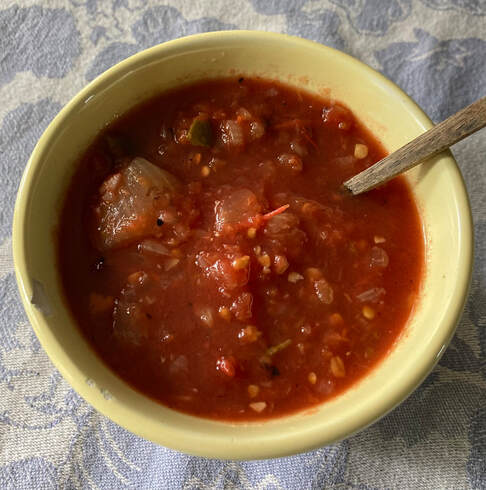
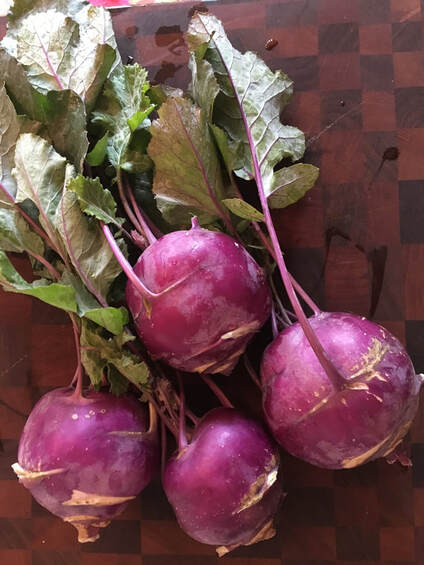
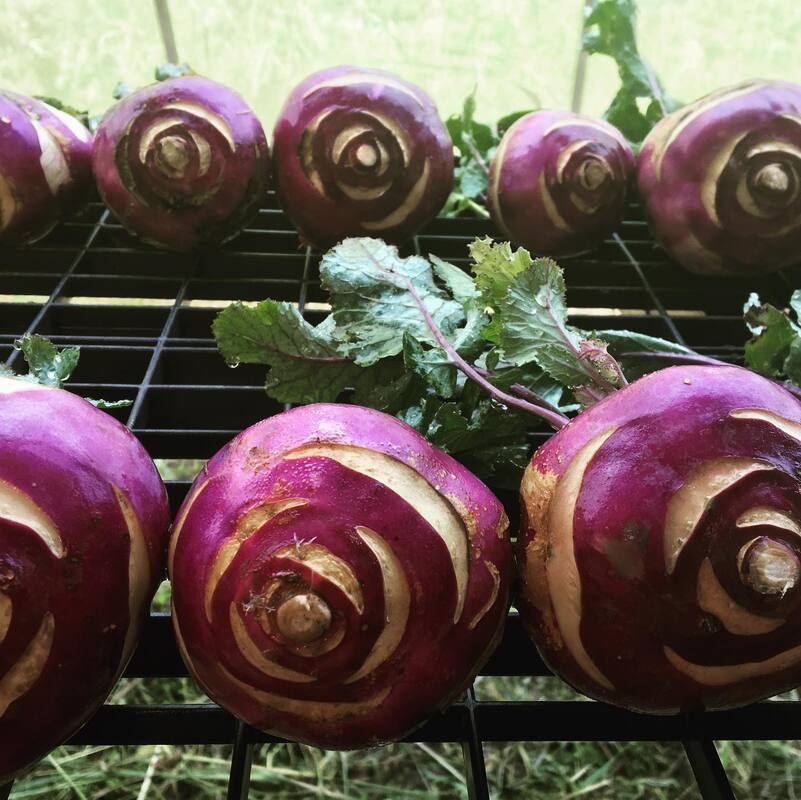
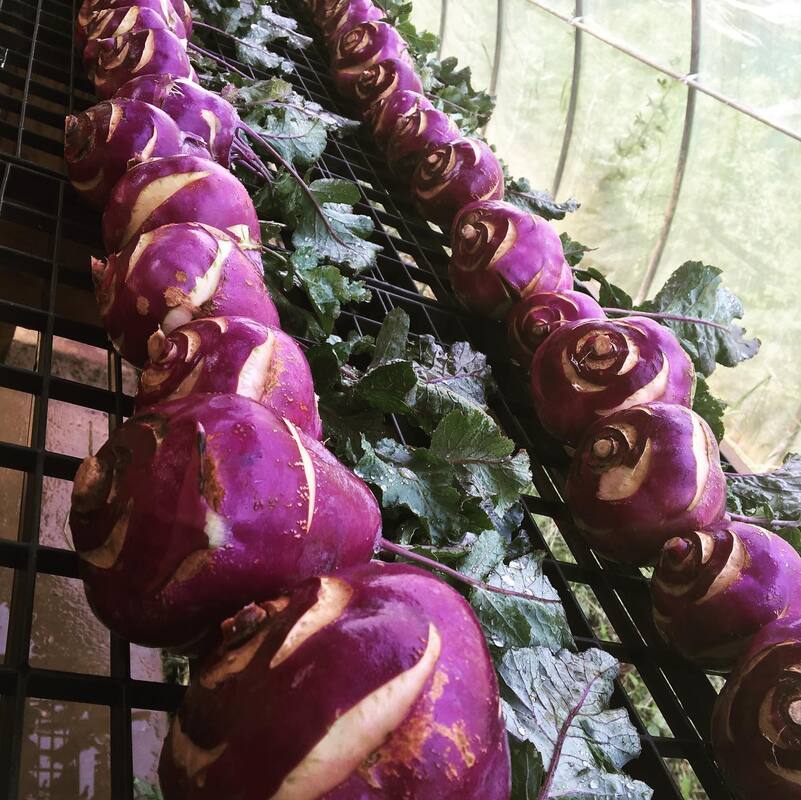
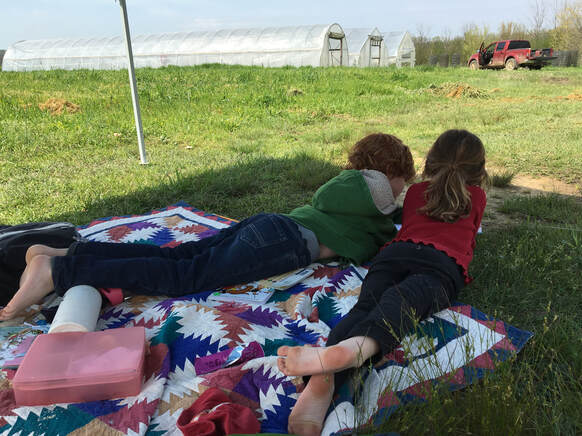
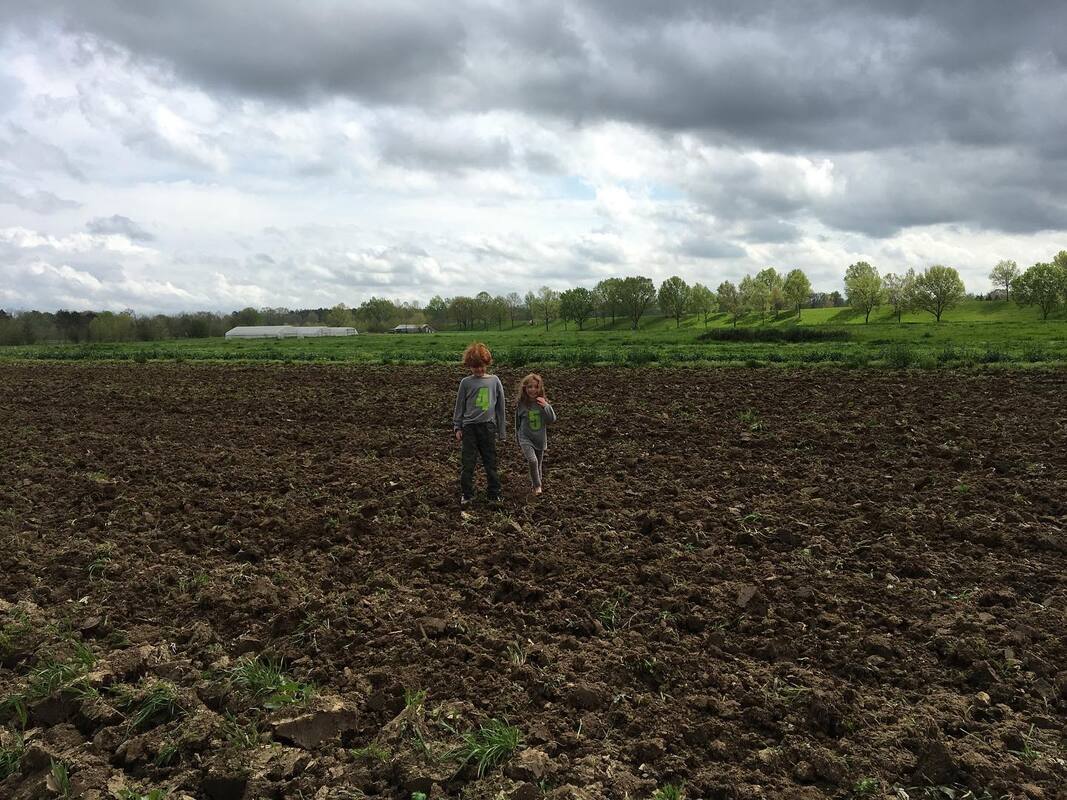
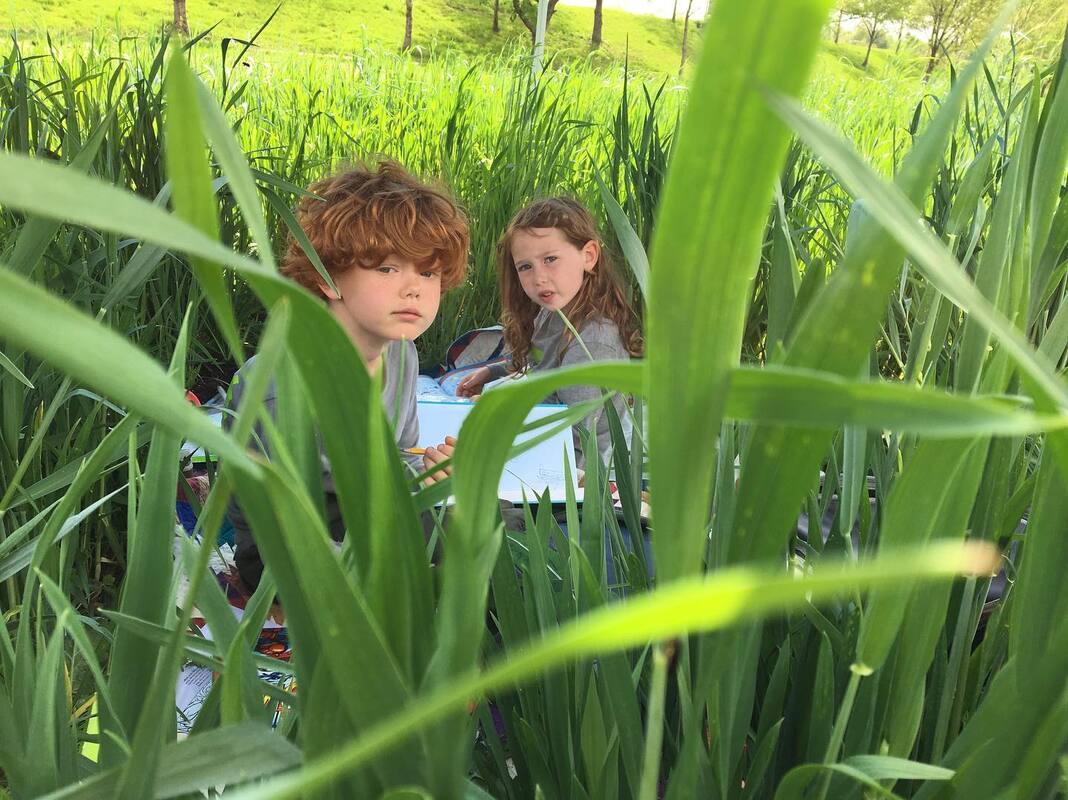

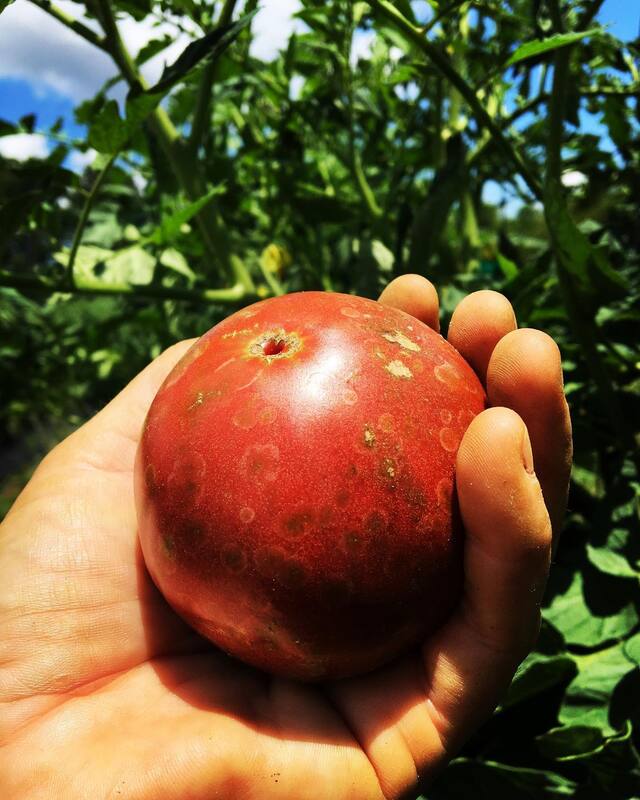
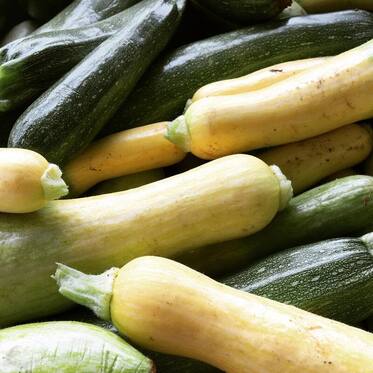
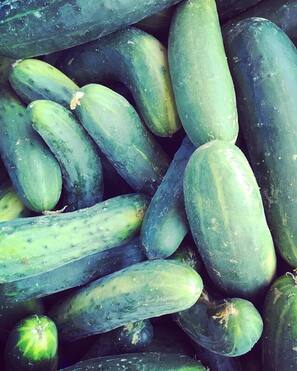
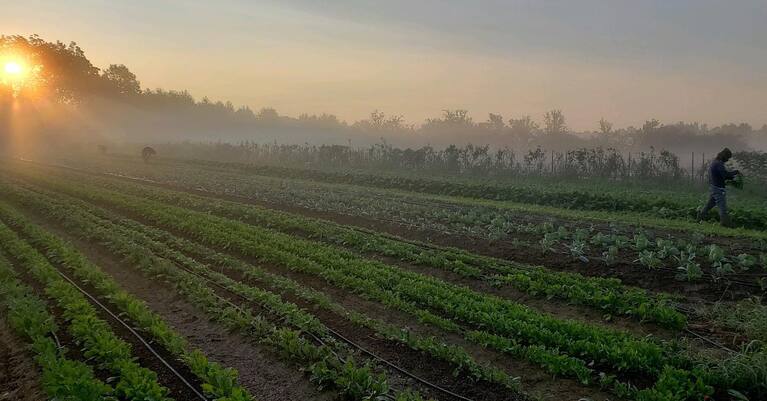
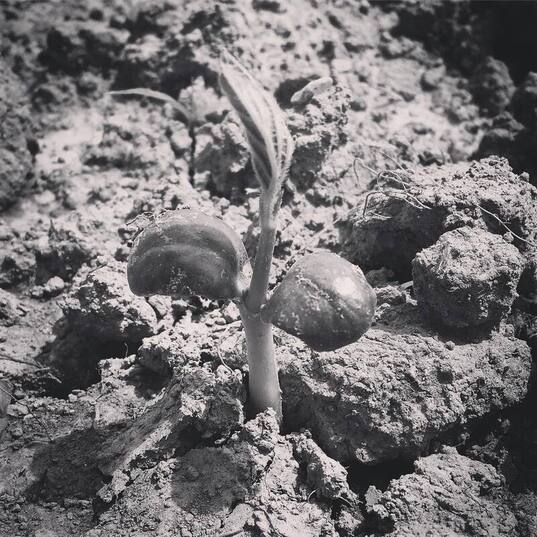
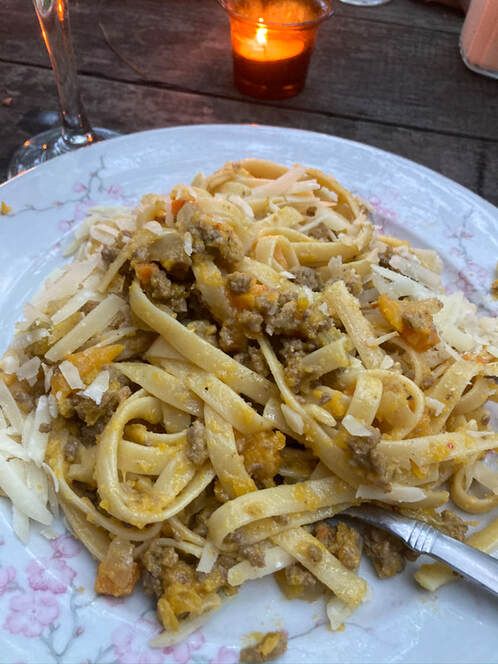
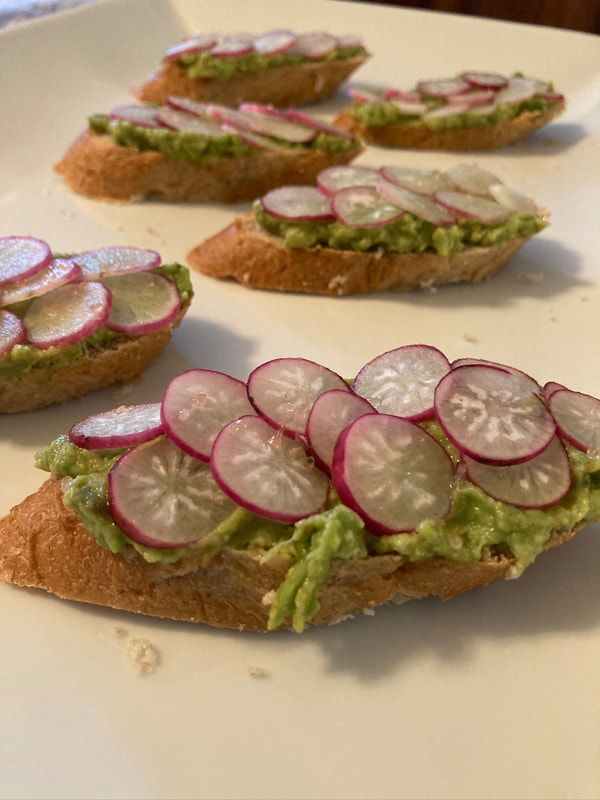
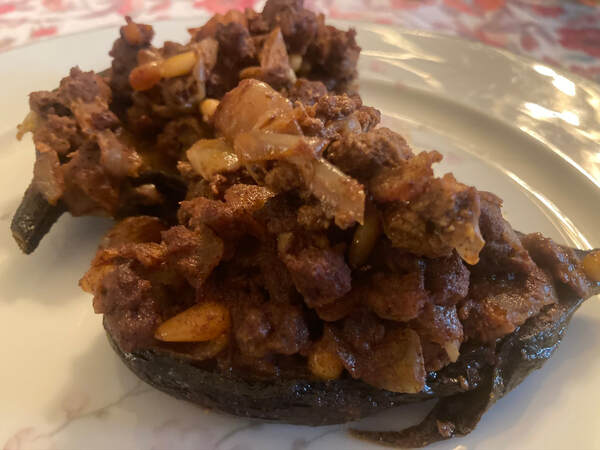
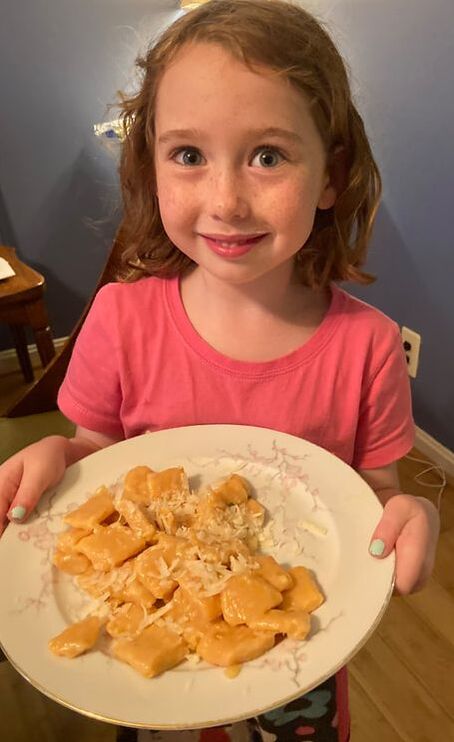
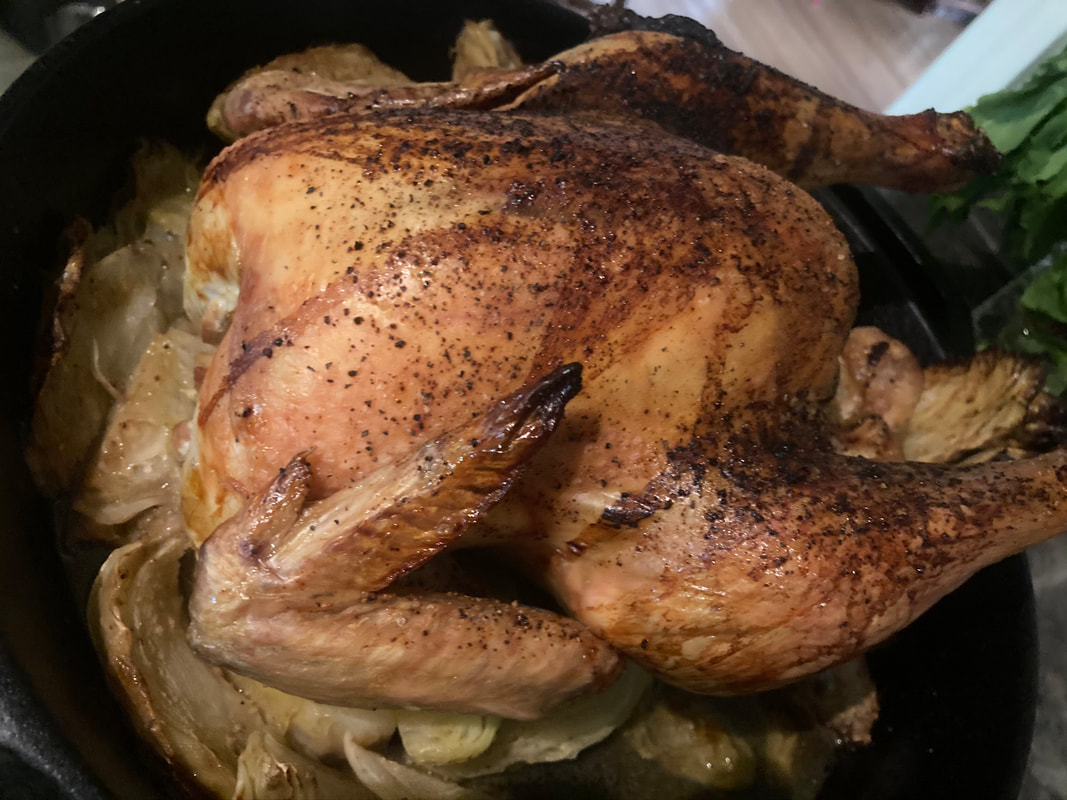
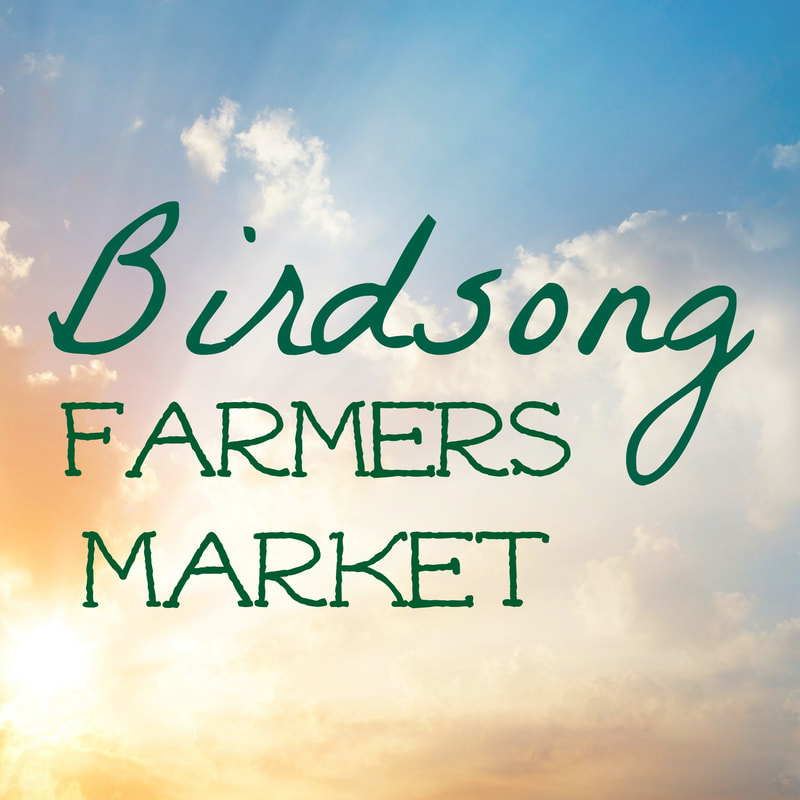
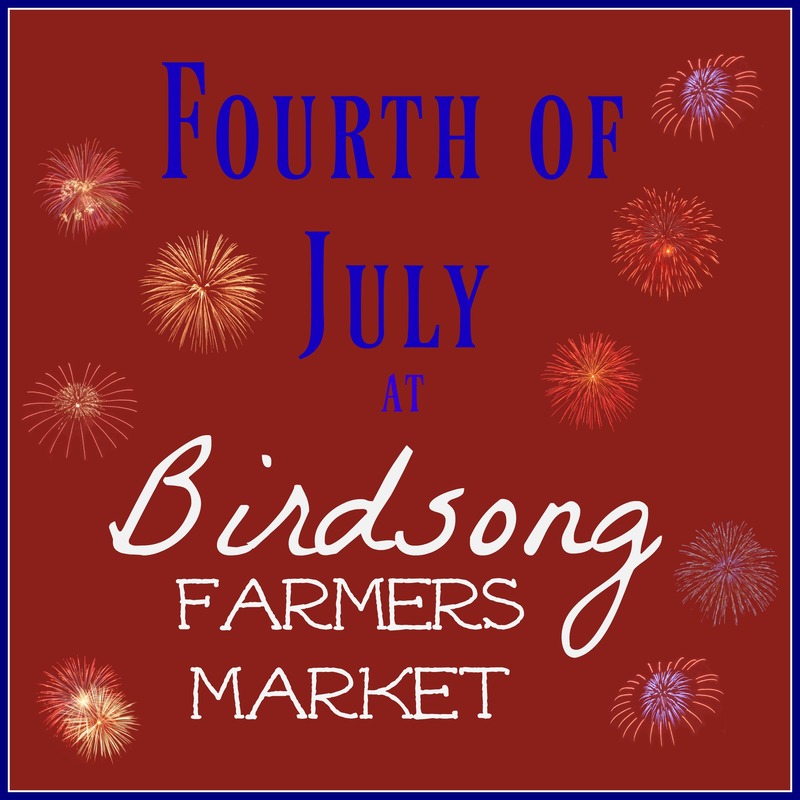
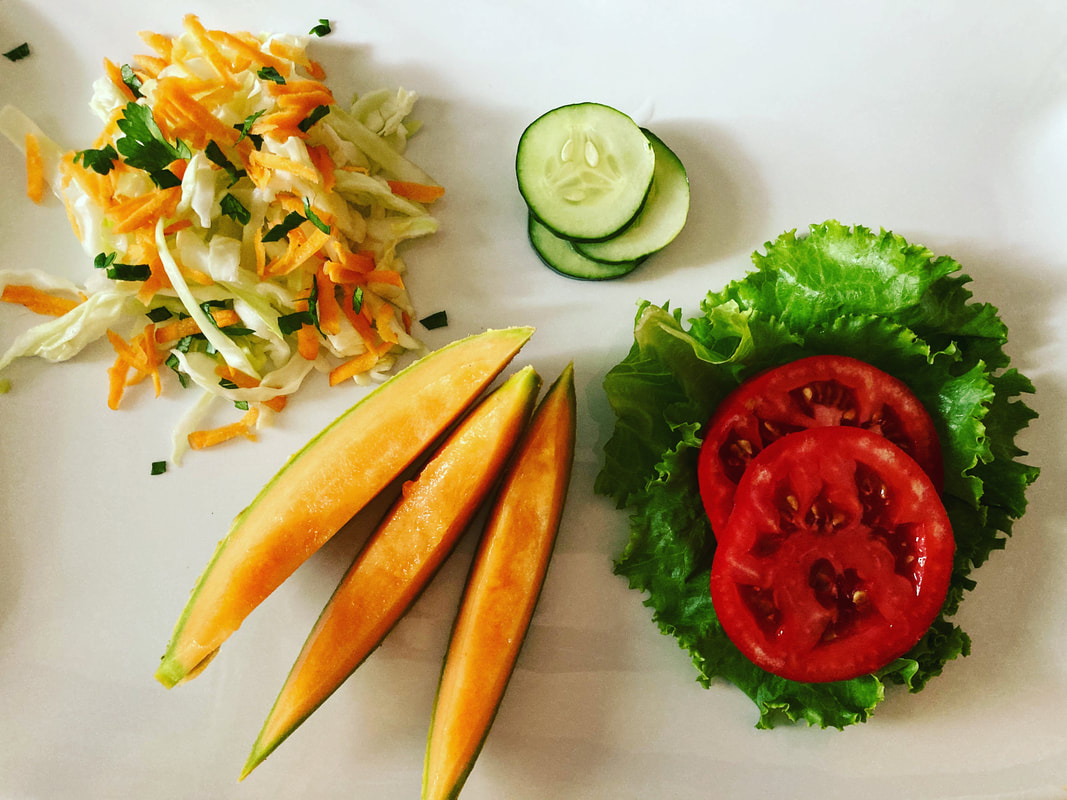
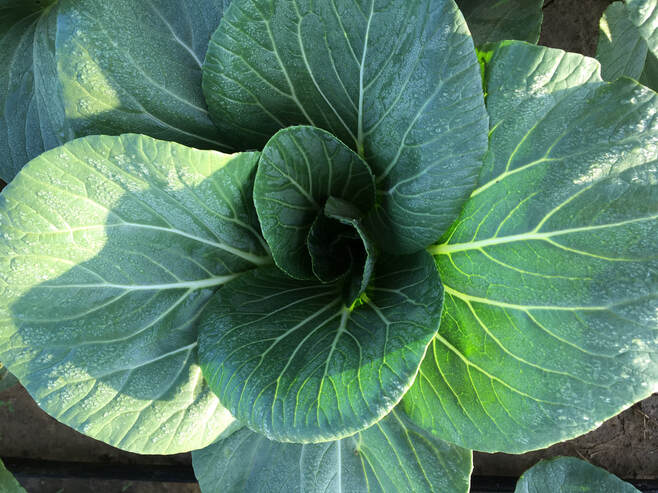
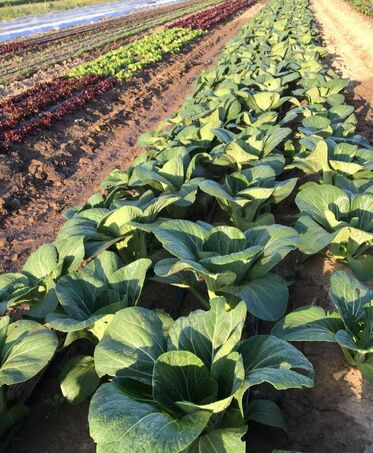
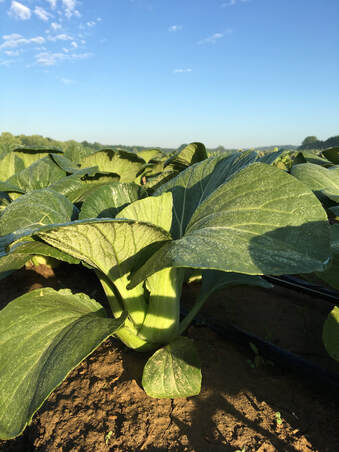
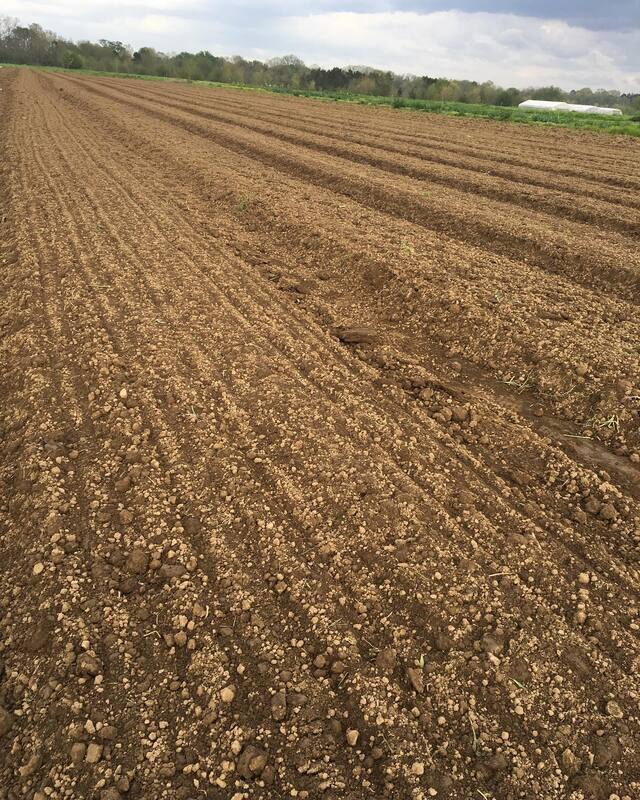
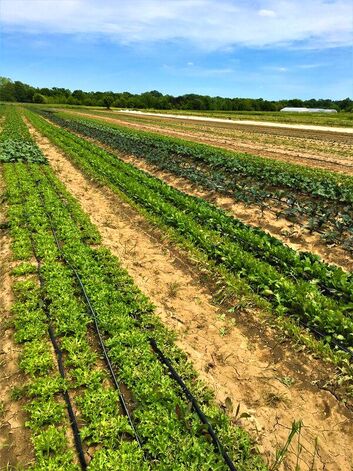


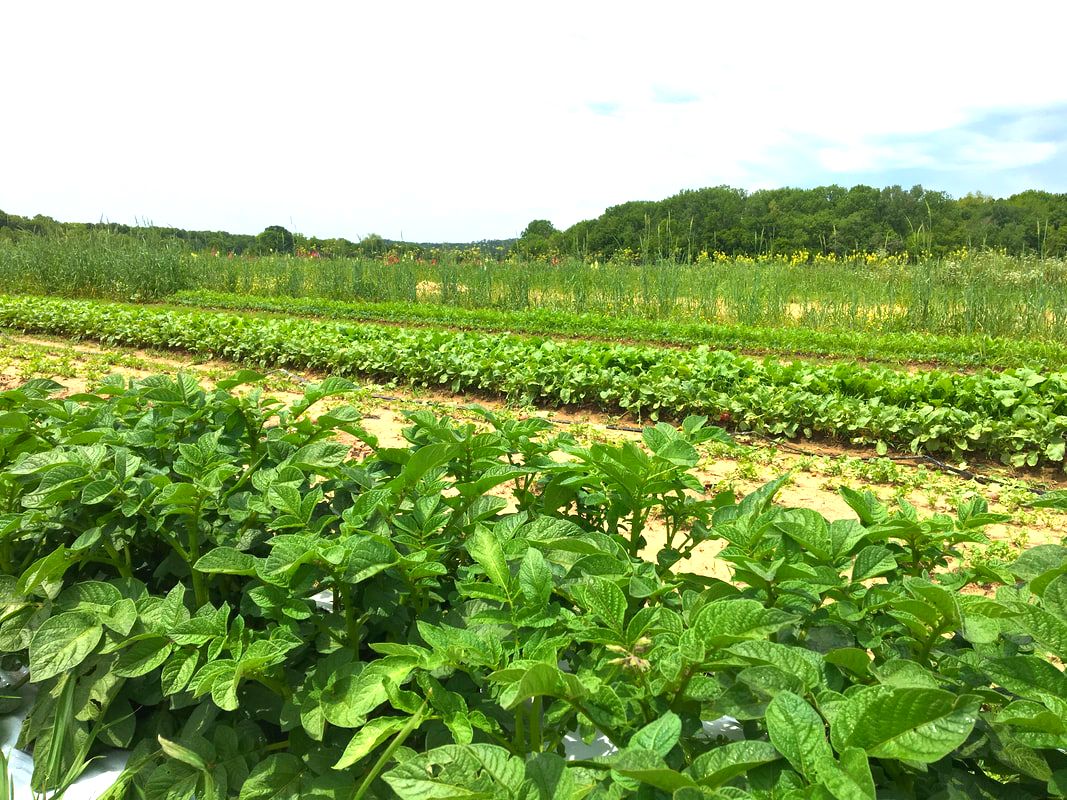
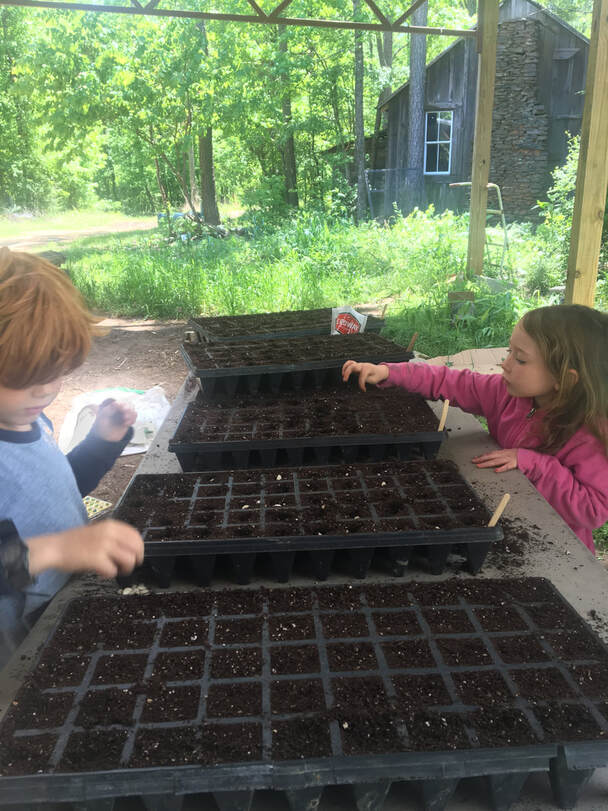
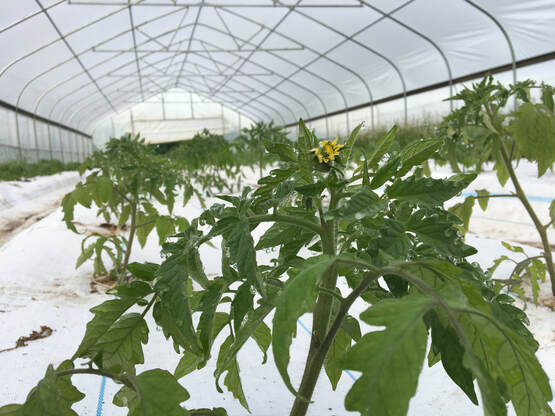
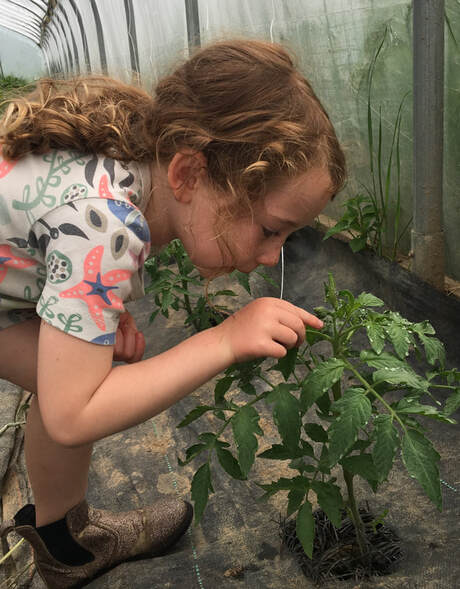
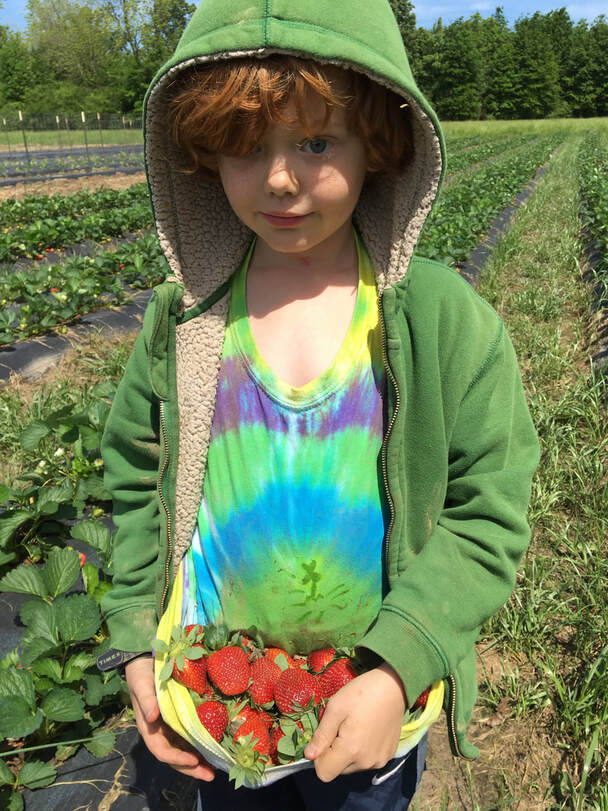
 RSS Feed
RSS Feed
